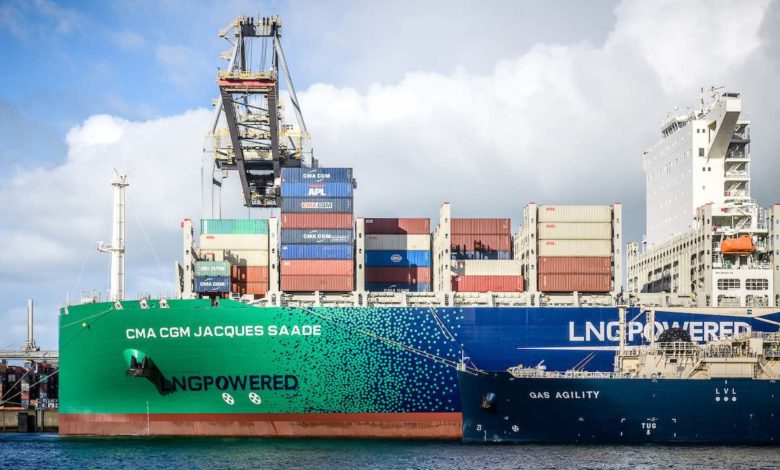World Bank takes its anti-LNG stance to the IMO

The World Bank has taken its anti-LNG stance to the International Maritime Organization (IMO).
Ahead of November’s gathering of the Marine Environment Protection Committee (MEPC) at the UN body’s London headquarters, the World Bank has renewed its attacks on liquefied natural gas as shipping’s fuel of the future.
The bank shocked many in shipping in April with the publication of a maritime decarbonisation report in which it specifically recommended countries pull back from investing in further LNG bunkering infrastructure.
Now the bank has decided to take the matter up with shipping’s governing body, sending the IMO various documents in submission for member states to deliberate at MEPC.
Methane leakage is 86 times more potent than CO2 over a 20-year period
Among the documents submitted, the bank states that it sees green ammonia and green hydrogen as the most promising options to decarbonise international shipping. The bank goes on to state: “LNG is likely to play a limited role in shippingʹs decarbonization, and countries should avoid new public policy that supports LNG as a bunker fuel, reconsider existing policy support, and continue to regulate methane emissions to put shipping on a Paris-aligned GHG emissions trajectory”.
Going on to highlight why it is concerned about the growing number of newbuilds coming out of Asian yards with LNG capabilities, the bank stated: “Methane leakage can occur at each stage of LNGʹs lifecycle (i.e. during extraction, distribution, and combustion), and represents the accidental release of a gas which is 86 times or 36 times more potent than CO2 over a 20-year or a 100-year period, respectively. Therefore, even small volumes of methane leakage can diminish any GHG and climate-related justifications for using LNG as a low-carbon substitute for oil-derived fuels.”
The bank then went on to take down arguments for greener gas forms that backers of LNG have been proposing lately.
Analysis was undertaken by the World Bank to examine a transitional role for LNG, whereby LNG infrastructure and ships could be reused from 2030 onward with compatible zero-carbon bunker fuels such as liquefied biomethane (LBM) and liquefied synthetic methane (LSM). However, evidence showed that there are expectations of limited availability and therefore lack of price competitiveness of sustainably sourced LBM, and that the production of LSM is expected to be more expensive than alternatives such as ammonia or hydrogen.
Conversely, the World Bank reckons natural gas in its non-liquefied state may play a different and more important role as a feedstock in kick-starting the commercial production of zero-carbon bunker fuels. In the early stages of decarbonisation, before enough renewable electricity supply becomes available to generate green hydrogen or green ammonia economically and at scale, natural gas with carbon capture and storage (CCS) could offer a viable way of reducing GHG emissions significantly on the way toward full decarbonisation, the bank has suggested.
In terms of gross tonnage, latest data from Clarksons shows 28.8% of today’s bumper order book is for LNG fuel capable tonnage.
Keen to dismiss the methane leakage argument, two LNG bunker lobby groups revealed details earlier this year of an independent, peer-reviewed study that claims GHG reductions of up to 23% are achievable now from using LNG as a marine fuel, depending on the marine technology employed. This is compared with the emissions of current oil-based marine fuels measured from well-to-wake .
This report used the latest primary data to assess all major types of marine engines and global sources of supply with data provided by original equipment manufacturers including Caterpillar MaK, Caterpillar Solar Turbines, GE, MAN Energy Solutions, Rolls Royce (MTU), Wärtsilä, and Winterthur Gas & Diesel, as well as from ExxonMobil, Shell, and Total on the supply side. Methane emissions from the supply chains as well as methane released during the onboard combustion process – also known as methane slip – have been included in the analysis.
Peter Keller, chairman of lobby group SEA-LNG, commented on the publication of this review: “Often based on outdated data, methane slip has become an overused argument for those wishing to justify inaction.”
The study claims that by 2030 methane slip will have been “virtually eliminated” as technological improvements continue.
The 77th gathering of MEPC is due to be held from November 8 to 12, coinciding with COP 26, a major international climate summit, also taking place in the UK. Splash will be bringing readers updates from both events.

Hello Sam
I read everywhere that LNG fueled vessels on order equates to early 30 percent of the order book based on gross tonnage. What I don’t read anywhere is the breakdown of this 30 percent in terms of the type of vessels.
The majority of these vessels are LNG carriers that use LNG as fuel from day one the LNG trade started almost 60 years back. The BOG from the cargo is used instead of venting it into the atmosphere.
It will be interesting if SEANG and Clarkson give a breakdown of this 30% share of the order book based on type and deadweight and number of LNG fueled vessels being ordered due to regulatory requirements excluding the LNGC’s.
Remove the LNGC’s from the equation to get a clear picture of the number, type, deadweight and gross tonnage that is on order.
A note for non-shipping people is that the gross tonnage is a nonlinear measure of a ship’s overall internal volume that is used for the calculation of port charges, canal dues and it is not reflective of the revenue generation capacity of the vessel.
Captain Saleem Alavi